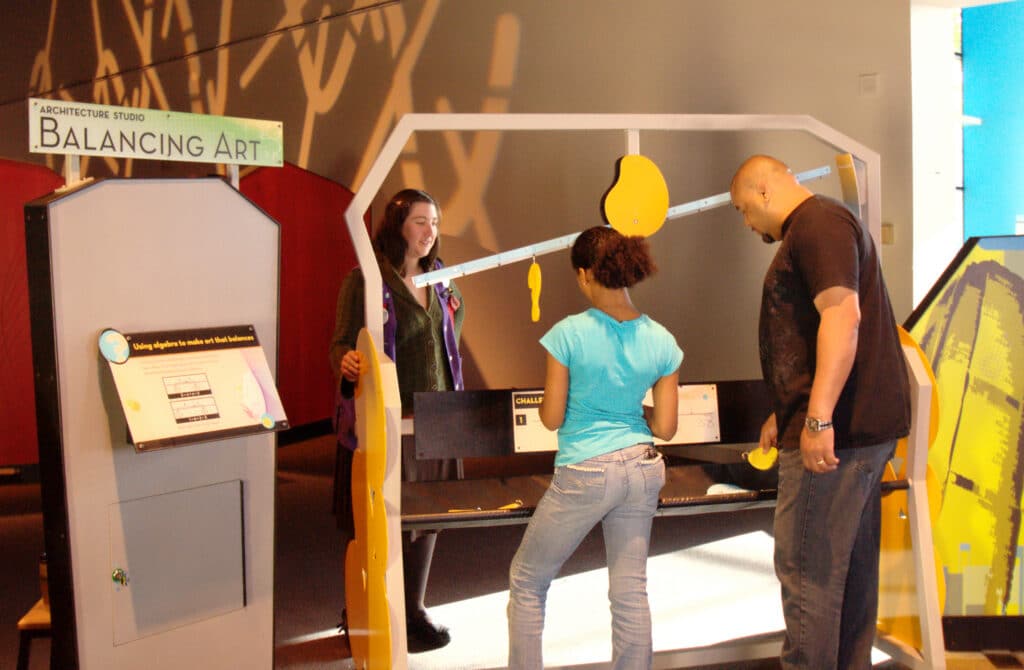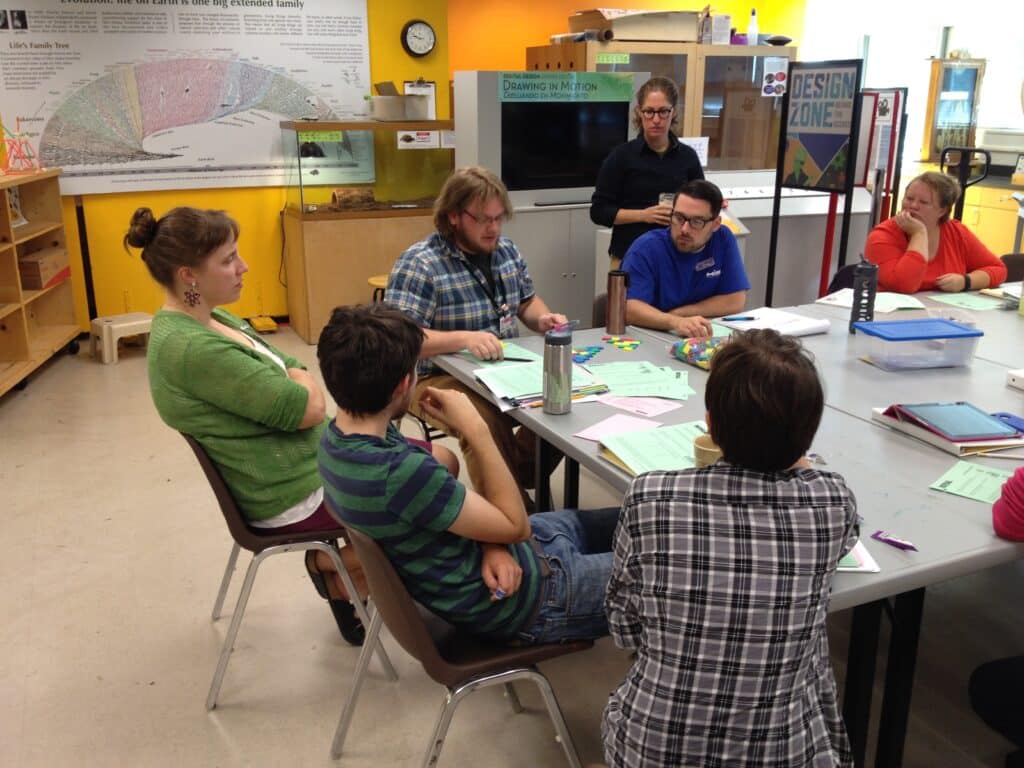Researching the Value of Educator Actions on Learning
2010–2016

Project Description
We wanted to learn how staff facilitation affected family dialog at exhibits—particularly how families talk about math. Emphasizing culturally responsive research and education approaches, we created a study to identify factors that influence the outcomes of family interactions in math-related exhibits.
We used a three-phase design that implemented a design based research study, an experimental study, and an Activity Frame analysis. Our goals for this research were to: (1) Iteratively develop and refine a theoretical model of how staff facilitation can deepen and extend family mathematical discourse at interactive exhibits; (2) rigorously test key components of this model, including the relationship between staff facilitation and the nature of family mathematical discourse; and (3) provide evidence and research-based tools to support professional development for informal STEM educators.

Resources & Research
Research & Evaluation
Resources
Culturally Responsive Research Framework ↓
This document outlines the culturally responsive research (CRR) framework developed to
guide planning, data collection and analysis, and dissemination throughout the Researching
the Value of Educator Actions for Learning (REVEAL) project.
Culturally Responsive Research Resources ↓
This document provides references to resources focused on culturally responsive research.
Adelante Mujeres + OMSI Learning with Community Partners ↓
This brief recap (in both English and Spanish) outlines the lessons learned from collaboration with community partners and how those lessons encouraged organizational growth.
Math Reasoning Instrument ↓
The Mathematical Reasoning at Exhibits Coding Rubric (MRE) is designed to measure the level of mathematical reasoning expressed by families and intergenerational visitor groups engaging with interactive math exhibits. The MRE focuses on mathematical reasoning related to algebraic thinking and functions (Kaput et al., 2008) and assesses verbal and behavioral indicators of reasoning by group members across four dimensions: (a) talking about mathematical quantities, (b) describing mathematical relationships among those quantities, (c) exploring mathematical relationships in the exhibit, and (d) achieving mathematical goals.
Math Enjoyment Instrument ↓
The Math Enjoyment at Exhibits survey index (MEE) is a five-item self-report survey measure intended to assess museum visitors’ enjoyment of the mathematical aspects of an exhibit experience.
Intergenerational Communication Instrument ↓
The Museum Intergenerational Communication coding rubric (MIC) is designed to assess three aspects of intergenerational communication for families at museum exhibits: frequency of adult communication, frequency of child communication, and level of interactive communication between adult and child family members.
Satisfaction Instrument ↓
The Modified General Museum Visitor Satisfaction Index (M-GMVS) is a five-item self-report survey measure intended to assess museum visitors’ general satisfaction with an exhibit experience.
REVEAL Professional Development Program
This five-part, video-based professional development program builds on findings from the REVEAL research study. It was created to help museum staff expand their understanding, skills and strategies of facilitating experiences at interactive activities.
Collaborators
Partners
Adelante Mujeres
Oregon State University
ScienceWorks
TERC
Funder
This material is based upon work supported by the National Science Foundation under Grant No. DRL-1321666. Any opinions, findings, and conclusions or recommendations expressed in this material are those of the authors and do not necessarily reflect the views of the National Science Foundation.
